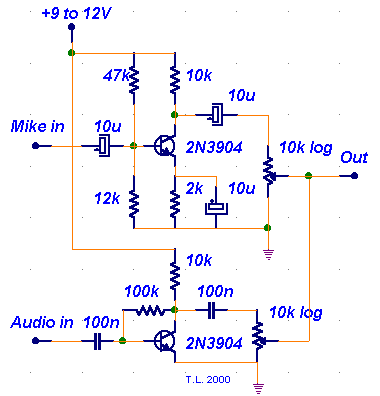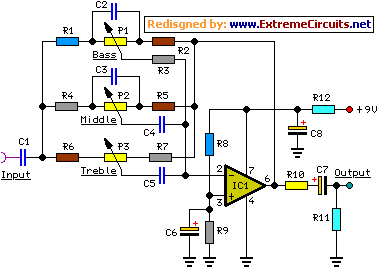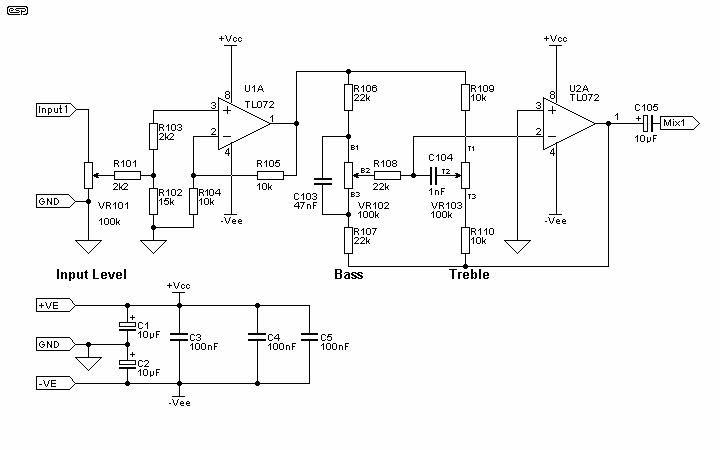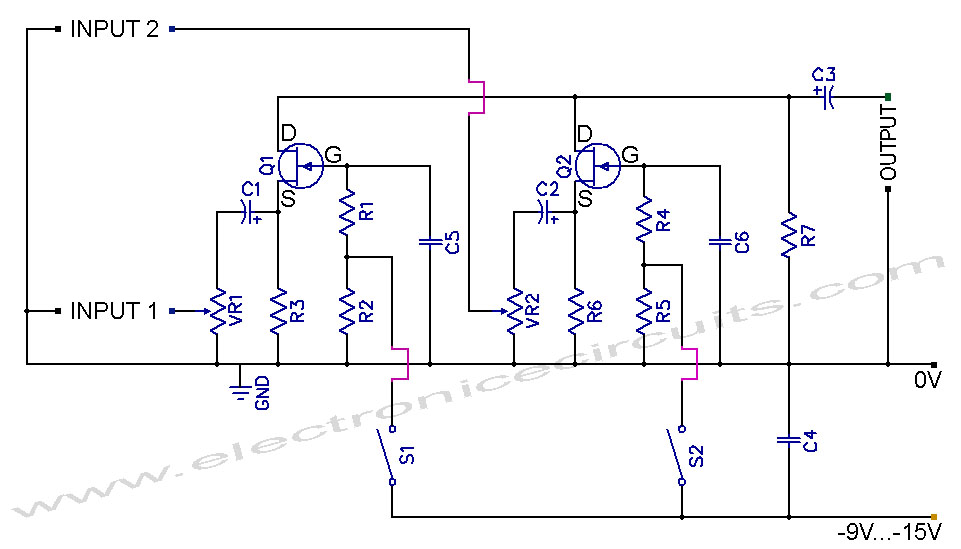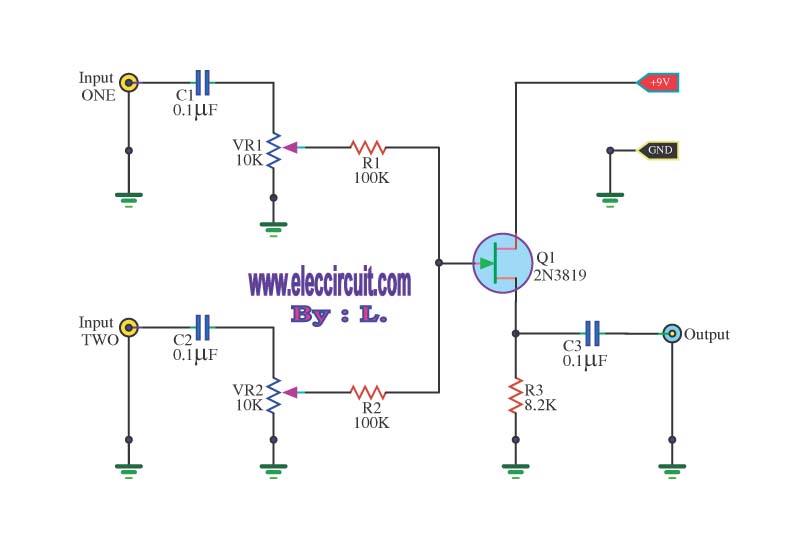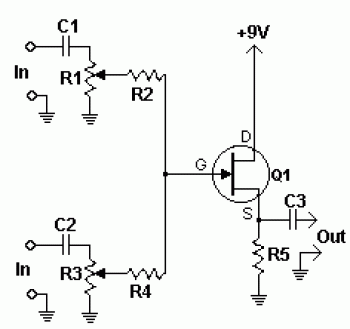
AUDIO_MIXER

An audio mixer is a useful circuit that combines two or more audio signal sources into a single signal channel. The circuit is based on the LM3900 current differential amplifier (CDA). The key components of this circuit are the three input networks, primarily resistors R3, R4, and R5, which are connected to various input sources labeled VIN1, VIN2, and VIN3.
The audio mixer circuit employs the LM3900 CDA, which is known for its low distortion and high performance in audio applications. The input networks consist of resistors that serve to balance the levels of the incoming audio signals from different sources. Each resistor is connected to a corresponding input signal, allowing for independent control over the volume and tone of each source.
The configuration of the circuit allows for seamless mixing of audio signals, where the output can be adjusted to achieve the desired blend of sounds. The output of the mixer can be further processed or amplified, depending on the requirements of the audio system.
In practical applications, the audio mixer can be utilized in various scenarios such as live sound reinforcement, studio recordings, and broadcasting. The design can also be expanded to include additional features like equalization, effects processing, and multiple output channels, enhancing its versatility in audio production environments.
Overall, the audio mixer built around the LM3900 CDA represents a fundamental building block in audio engineering, providing a reliable and effective means of combining multiple audio signals into a cohesive output.An audio mixer is a handy circuit that will combine two or more audio signal sources into one signal channel. The figure shows an audio mixer that is built around the LM3900 CDA. The crux of this circuit is the three input networks, principally R3, R4, and R5. These resistors are connected to different input sources (labeled VIN1,VIN2, and VIN3). Those thr.. 🔗 External reference
The audio mixer circuit employs the LM3900 CDA, which is known for its low distortion and high performance in audio applications. The input networks consist of resistors that serve to balance the levels of the incoming audio signals from different sources. Each resistor is connected to a corresponding input signal, allowing for independent control over the volume and tone of each source.
The configuration of the circuit allows for seamless mixing of audio signals, where the output can be adjusted to achieve the desired blend of sounds. The output of the mixer can be further processed or amplified, depending on the requirements of the audio system.
In practical applications, the audio mixer can be utilized in various scenarios such as live sound reinforcement, studio recordings, and broadcasting. The design can also be expanded to include additional features like equalization, effects processing, and multiple output channels, enhancing its versatility in audio production environments.
Overall, the audio mixer built around the LM3900 CDA represents a fundamental building block in audio engineering, providing a reliable and effective means of combining multiple audio signals into a cohesive output.An audio mixer is a handy circuit that will combine two or more audio signal sources into one signal channel. The figure shows an audio mixer that is built around the LM3900 CDA. The crux of this circuit is the three input networks, principally R3, R4, and R5. These resistors are connected to different input sources (labeled VIN1,VIN2, and VIN3). Those thr.. 🔗 External reference
Warning: include(partials/cookie-banner.php): Failed to open stream: Permission denied in /var/www/html/nextgr/view-circuit.php on line 713
Warning: include(): Failed opening 'partials/cookie-banner.php' for inclusion (include_path='.:/usr/share/php') in /var/www/html/nextgr/view-circuit.php on line 713
